![]()
| When I Paint My Masterpiece |
|
![]()
His Bobness covers 'Ol Blue Eyes with mixed results.
Bob Dylan
Shadows In the Night
TRADITIONAL POP (Columbia)
By Kyle Anderson in Entertainment Weekly
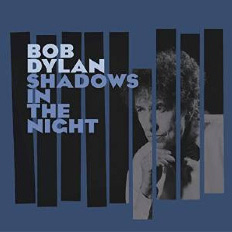
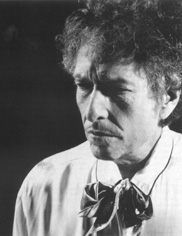
![]() ven when he was barely out of his teens and loping around Greenwich Village with a sneer that doubled as protest accelerant, Bob Dylan felt kind of old. His relationship with journalists could be generously described as crotchety, his signature reedy voice made him sound prematurely timeworn, and his brand of standing up to the Man was less like the rah-rah calls for togetherness his folk brethren and more a sullen rejection of anybody who represented the status quo -- up to and including his own acoustic-obsessed fans.
ven when he was barely out of his teens and loping around Greenwich Village with a sneer that doubled as protest accelerant, Bob Dylan felt kind of old. His relationship with journalists could be generously described as crotchety, his signature reedy voice made him sound prematurely timeworn, and his brand of standing up to the Man was less like the rah-rah calls for togetherness his folk brethren and more a sullen rejection of anybody who represented the status quo -- up to and including his own acoustic-obsessed fans.
|
This isn't the Oceans II Sinatra drinking dry martinis with Dino at the Copa. Shadows showcases an icon bowing before a canon that continues to thrive and find new acolytes in the same way that his own "Like a Rolling Stone" has. It's the sound of Dylan, now 73, acknowledging his own mortality by reminding everyone that though the body may be temporary, the work can live forever. B
THE WORD OF BOB
Dylan's AARP Chat: Six Gems
By Andy Greene in Rolling Stone
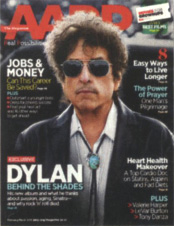 To promote Shadows in the Night, his collection of 10 standards associated with Frank Sinatra, Bob Dylan granted his first interview since his 2012 Rolling Stone cover story -- to AARP the Magazine. Here are some highlights from former RS managing editor Bob Love's 9,000-word Q&A.
To promote Shadows in the Night, his collection of 10 standards associated with Frank Sinatra, Bob Dylan granted his first interview since his 2012 Rolling Stone cover story -- to AARP the Magazine. Here are some highlights from former RS managing editor Bob Love's 9,000-word Q&A.
Dylan thinks there was a conspiracy to destroy early rock & roll.
"When they finally recognized what it was, they had to dismantle it, which they did, starting with the payola scandals and things like that," Dylan said.
He went to an Elton John show and the crowd weirded him out.
"There must have been at least three generations of people there. But they were all the same. Even the little kids. They looked just like their grandparents. It was strange."
He attended a few Billy Graham rallies in the 1950s and 1960s.
"The guy was like rock & roll personified -- volatile, explosive. He had the hair, the tone, the elocution -- when be spoke, he brought the storm down."
Don't ask him if he thinks covering Frank Sinatra standards is "risky."
"Like walking across a field laced with land mines? Or working in a poison-gas factory? There's nothing risky about making records. Comparing me with Frank Sinatra? You must be joking."
He doesn't think that government creates jobs.
"These big billionaires are the ones who can do it. We see... people who have nothing to do but meander around, turning to drink and drugs, into killers and jailbirds. They could all have work created for them by all these hotshot billionaires."
He didn't like Rod Stewart's Great American Songbook series.
"I thought if anybody could bring something different to these songs, Rod certainly could. I'm not going to knock anybody's right to make a living, but you can always tell if somebody's heart and soul is into something, and I didn't think Rod was into it that way." ![]()
| Long Roads, Big Beats, Hard Times, and Hell |
|
![]()
The trials, triumphs, and cars of three geniuses of American music.
Respect: The Life of Aretha Franklin
By David Ritz
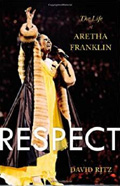 The first time I heard Aretha Franklin, I was 15 years old. "Respect" was the song. This was in 1967, in Cleveland, where the hippest AM radio came out of Windsor, Ontario, by way of Detroit -- CKLW: 50,000 clear-channel watts of light and love. Soul music.
The first time I heard Aretha Franklin, I was 15 years old. "Respect" was the song. This was in 1967, in Cleveland, where the hippest AM radio came out of Windsor, Ontario, by way of Detroit -- CKLW: 50,000 clear-channel watts of light and love. Soul music.
 I had been listening, but I'd never heard anything like her voice. Nobody had: There was nothing like it. "Respect" was Otis Redding's song until Aretha took it and owned it. I didn't know jack shit about its roots -- didn't know Berry Gordy from Bear Bryant -- but I had a soul, and I felt the furious, purifying joy wrought by her immortal voice.
I had been listening, but I'd never heard anything like her voice. Nobody had: There was nothing like it. "Respect" was Otis Redding's song until Aretha took it and owned it. I didn't know jack shit about its roots -- didn't know Berry Gordy from Bear Bryant -- but I had a soul, and I felt the furious, purifying joy wrought by her immortal voice.
That nectar did not come easy. David Ritz's new biography of Franklin, Respect (Little, Brown, $22.23), is essentially an oral history told by those closest to her - family, producers, musicians, her longtime business manager -- all of whom share more or less the same point of view: The Queen of Soul is a tortured genius, a gospel prodigy, the mother of two by age 15, a tough, imperious woman who has fought forever for control of her life and career.
One unfortunate result of Franklin's temperament is the glaring absence of her own voice in Respect. She's still alive -- unlike many of the sources Ritz quotes at great length from years-old interviews -- still working, still searching for hits at the age of 73. Ritz coauthored Aretha's 1999 autobiography, From These Roots, and explains in an introductory chapter that he felt compelled to write this one without his subject's participation because the first was, at Franklin's insistence, "a fairy tale." Respect is a worthy historical document -- but one with a diva-sized hole at its center. - SCOTT RAAB, Esquire
Jerry Lee Lewis: His Own Story
By Rick Bragg
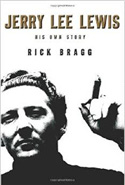 When he was young, Jerry Lee Lewis enrolled in a Bible college in Waxahachie, Texas, figuring he'd become a preacher. There, one day, somebody asked him to play a few gospel songs at the school talent show. He obliged. Afterward, when the audience stopped howling with lust or freedom or whatever it was that had just been awakened in them, he was expelled. "You've ruined a great Christian college," the dean said.
When he was young, Jerry Lee Lewis enrolled in a Bible college in Waxahachie, Texas, figuring he'd become a preacher. There, one day, somebody asked him to play a few gospel songs at the school talent show. He obliged. Afterward, when the audience stopped howling with lust or freedom or whatever it was that had just been awakened in them, he was expelled. "You've ruined a great Christian college," the dean said.
 And maybe he had. Or maybe he'd saved it. As with all Jerry Lee stories, it's hard to separate the creation from the destruction. And in Rick Bragg's biography, Jerry Lee Lewis: His Own Story (HarperCollins, $20.96), both came out in abundance: the wiry, Ferriday, Louisiana, daredevil, breech-born and "comprised mostly of whalebone and hell," who at four depressed a key on his aunt's piano and was forever changed; who in seventh grade tried to strangle a teacher, earning the nickname Killer; who had a little hit in 1956 and a two very big ones in 1957; who stayed on top for just 500 days before he was ruined at 22 by the revelation that he'd married his 13-year-old second cousin, Myra.
And maybe he had. Or maybe he'd saved it. As with all Jerry Lee stories, it's hard to separate the creation from the destruction. And in Rick Bragg's biography, Jerry Lee Lewis: His Own Story (HarperCollins, $20.96), both came out in abundance: the wiry, Ferriday, Louisiana, daredevil, breech-born and "comprised mostly of whalebone and hell," who at four depressed a key on his aunt's piano and was forever changed; who in seventh grade tried to strangle a teacher, earning the nickname Killer; who had a little hit in 1956 and a two very big ones in 1957; who stayed on top for just 500 days before he was ruined at 22 by the revelation that he'd married his 13-year-old second cousin, Myra.
But that's just a quarter of the man's life. Bragg -- a captivating southern storyteller who spent months with the Killer -- excels in unspooling what came next: Jerry Lee's decade on the mad playing bad bars for bad money in an endless bid to rebuild his audience; and then his sudden rise to a second superstardom, greater than the first, as a honky-tonk singer and world-class wreaker of havoc and sufferer of tragedy and misfortune, all the while abiding by a simple philosophy: "Jerry Lee Lewis don't disappear."
It's an impeccably written, deeply felt account of a singular American creature: a born hell-raiser who fears the Lord, who got rich playing the music of the poor, and who, at 79, is pretty sure he was on the side of the angels all along. - JOE KEOHANE, Esquire
Special Deluxe: A Memoir of Life & Cars
By Neil Young
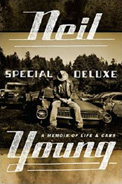 Neil Young already wrote his rock book. It's called Waging Heavy Peace and discusses everything from early Buffalo Springfield to how a newly clean David Crosby fell asleep between takes. Special Deluxe: A Memoir of Life & Cars (Blue Rider Press, $21.69) is not about that world, although some of it inevitably ends up on the page. This is more Young the romantic, an unmistakably odd but nevertheless charming storyteller with an amazing life -- and a deep affinity for automobiles. Everyone knows "Long May You Run" was an elegy for a 1948 Buick hearse, but almost nobody knows the man has a scrap field full of cars he's used up but can't bear to part with.
Neil Young already wrote his rock book. It's called Waging Heavy Peace and discusses everything from early Buffalo Springfield to how a newly clean David Crosby fell asleep between takes. Special Deluxe: A Memoir of Life & Cars (Blue Rider Press, $21.69) is not about that world, although some of it inevitably ends up on the page. This is more Young the romantic, an unmistakably odd but nevertheless charming storyteller with an amazing life -- and a deep affinity for automobiles. Everyone knows "Long May You Run" was an elegy for a 1948 Buick hearse, but almost nobody knows the man has a scrap field full of cars he's used up but can't bear to part with.
 Each chapter in Special Deluxe revolves around one of those cars. The title comes from a 1950 Plymouth that spent ten years hauling Elvis, a Tennessee bluetick coonhound, on a horse blanket in the backseat. When Elvis died during a cancer operation at the vet, his body rode back to Young's California ranch on the blanket. "Although Elvis was gone," he writes, the Special Deluxe "just kept on giving... rolling on with me and my memories in it." This is Young at his best, burbling with anecdotes about deeply human, universal stuff.
Each chapter in Special Deluxe revolves around one of those cars. The title comes from a 1950 Plymouth that spent ten years hauling Elvis, a Tennessee bluetick coonhound, on a horse blanket in the backseat. When Elvis died during a cancer operation at the vet, his body rode back to Young's California ranch on the blanket. "Although Elvis was gone," he writes, the Special Deluxe "just kept on giving... rolling on with me and my memories in it." This is Young at his best, burbling with anecdotes about deeply human, universal stuff.
Highlights: a 1951 Jeep Overland pickup. A 1957 Flxible Sceniccruiser bus nicknamed Sam Sleaze. A bar on California's Skyline Boulevard in 1974, with a waitress "collidin'' with the very air she breathes." And the notion that the guy has never stopped moving, in every sense of the word. - SAM SMITH, Esquire ![]()
![]() Reader's Comments
Reader's Comments
No comments so far, be the first to comment.
